


The butterfly effect is a notion that argues that a tiny alteration in one location can have a large impact on another location or over time. In the case of Dior's Mumbai Fall 2023 show by Maria Grazia Chiuri, creative director of the Maison's women's collections, there are several factors to consider in analysing its impact on India's current and future luxury landscape.
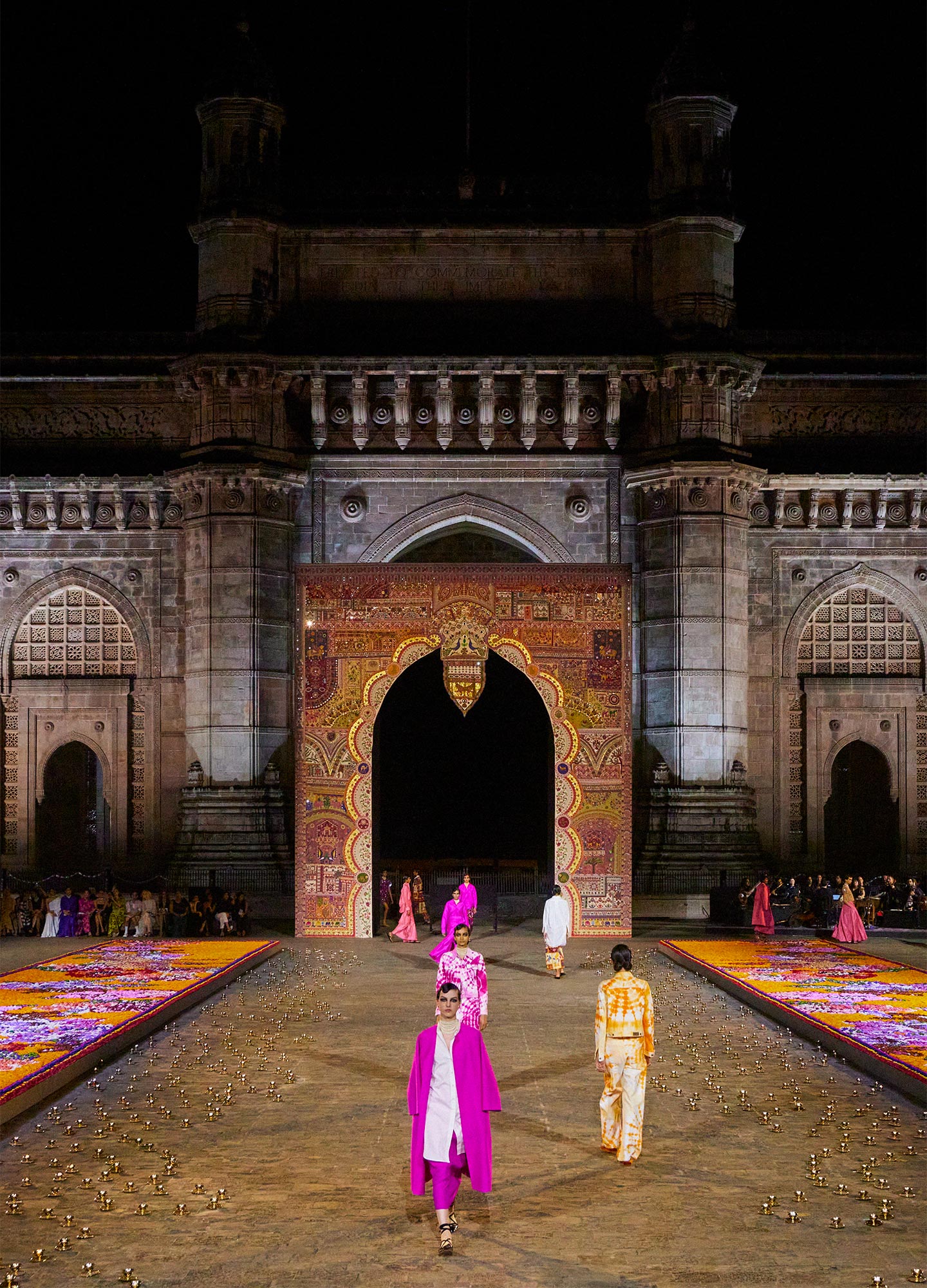
The finale of the Dior Fall 2023 show held at the Gateway of India in Mumbai © Dior
The advent of Dior in the Indian market will in addition generate employment opportunities for modelling agencies, local artisans, retail staff, and more. This event will open a window of opportunities for future generations as the luxury market in India is booming with many brands penetrating the market. And generating employment leading to an increase in the average disposable income and also moving towards higher purchasing power in the future.
Understanding the present to saw the future
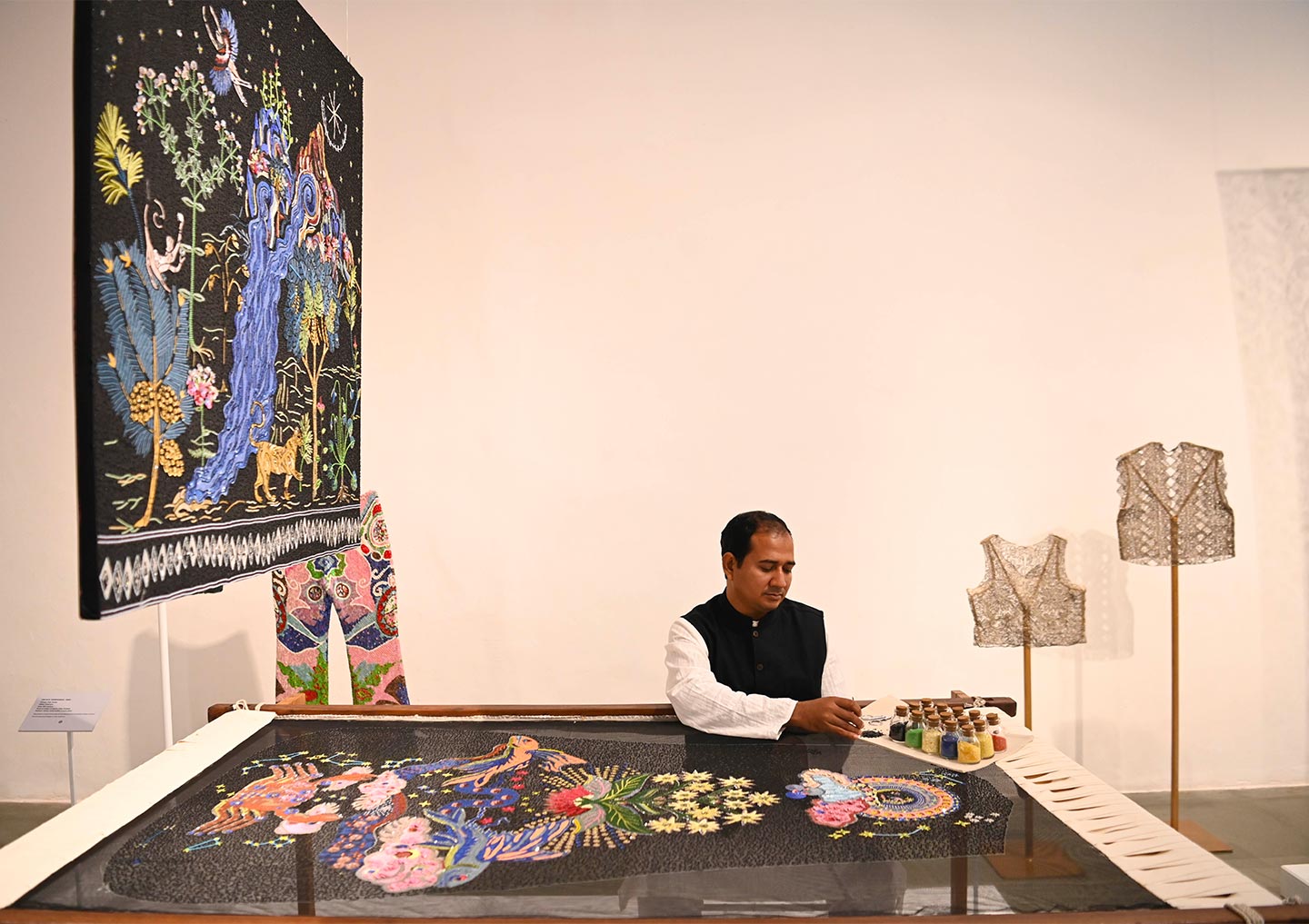
Chanakya's special presentation in honour of the Dior Fall 2023 show as "an ode to the artisan, a reflection of their creative spirit, and the sustaining power of human hands" © Dior, photo: Sahiba Chawdhary
The current luxury Indian market is going through a drastic alteration. The Dior Fall 2023 show can be the inception to building an advanced futuristic market. This event could trigger various changes in the current market. Let’s consider the brand’s commitment to sustainability and collaboration with Chanakya, a Mumbai-based organisation preserving the ancient hand embroidery heritage since 1984 and ensuring the Indian artisan magic lives forever. In 2016, Chanakya established the Chanakya School of Craft, a foundation and a non-profit school of craft dedicated to art, culture and women’s empowerment.
This has the potential to preserve traditional crafts, empower women artisans, and raise global awareness and appreciation for Indian embroidery. This also challenges other competitors to collaborate with Indian embroidery schools and help preserve such rare art forms. This emergence of international and domestic brands has already begun to form a shock wave.
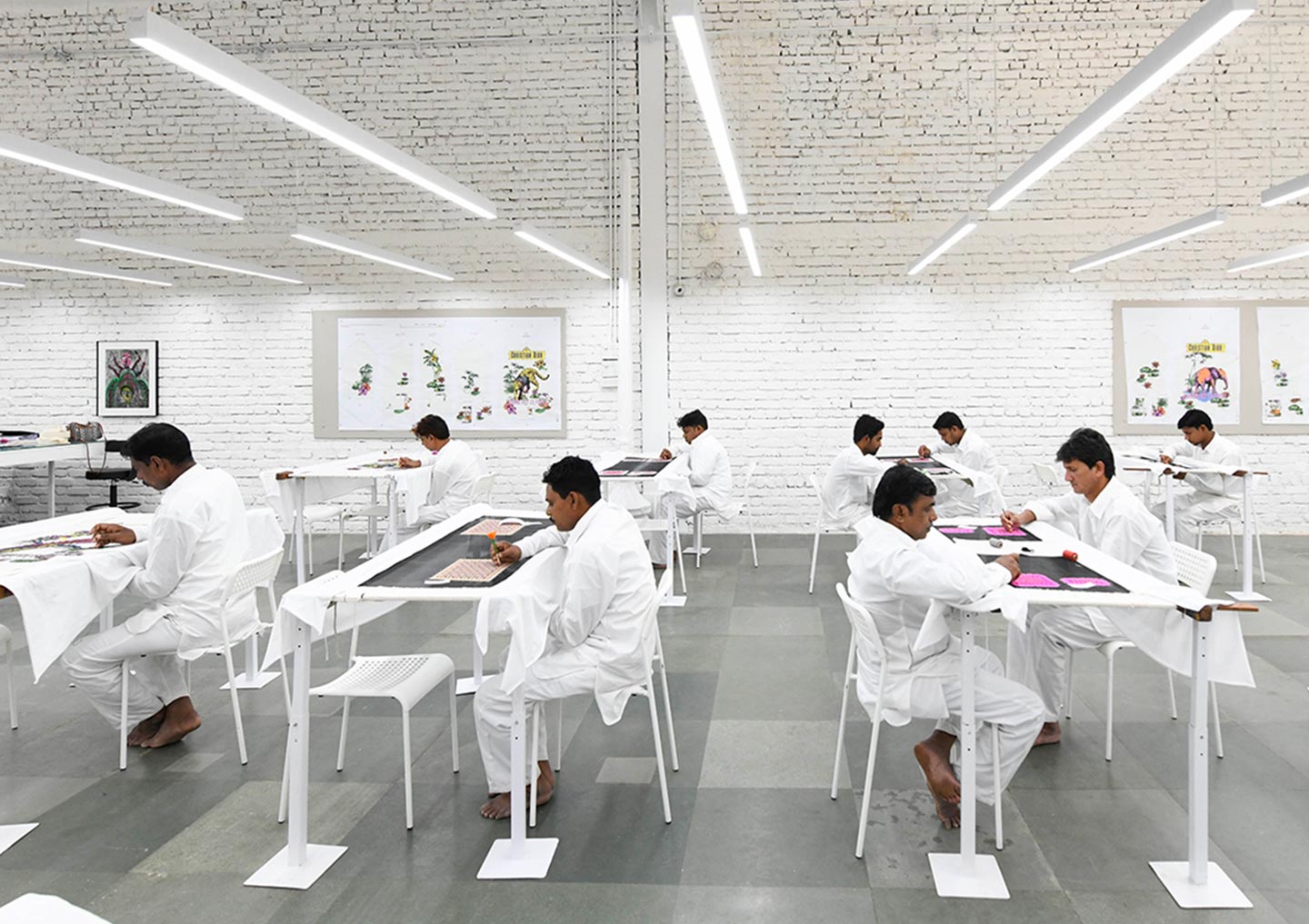
Chanakya's special presentation in honour of the Dior Fall 2023 show © Dior, photo: Sahiba Chawdhary
Indian industry’s competition will intensify and bring a plethora of opportunities to differentiate; such as transparency, CSR, omnichannel, craftsmanship, employment, and much more. The aforementioned developments are expected to result in a rise in foreign direct investment, an expansion of the gross domestic product, and an increase in tourism. Additionally, the ongoing surge of competition is aimed at offering more captivating and alluring experiences for forthcoming customers. India as a country is poised to trickle up in the luxury market.
Let’s talk numbers
The current Indian luxury market is expected to exceed $200 billion by 2023. According to Statista, the market is expected to grow by 8.03% per year (CAGR 2021-25).
Although the covid scenario has made it difficult to predict anything with certainty, India's economic growth is expected to be in the range of 7.5-8.5% over the next decade. According to Euromonitor International, the market will be worth $5.1 billion in 2022 to $6.1this year.
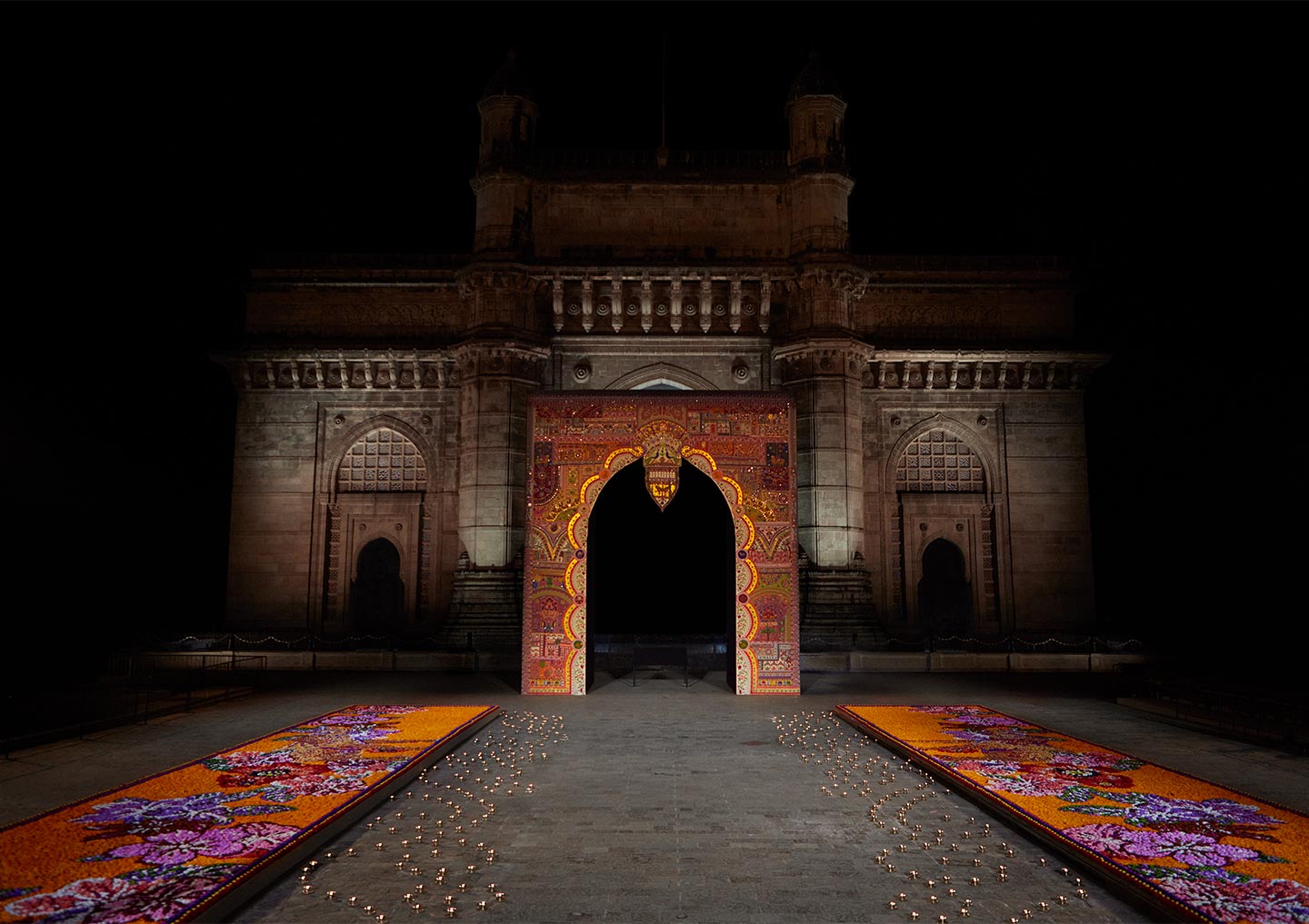
The scenography for the Dior Fall 2023 show in Mumbai by Maria Grazia Chiuri. © Dior, photo: Gupta Niveditaa
The Dior Fall 2023 show, presented in front of the historic Gateway of India monument, would have a ripple effect on the future of the luxury market in the country, including lobbying the government to create necessary economic reforms needed to reduce taxation and make policies more favourable for consumers and newer brands entering the market.
Taxation has forever been the biggest problem for many luxury brands as consumers prefer buying luxury internationally due to the complex tax structure and exorbitant prices. The luxury taxation rate in India is 32% which makes all the products expensive and drives consumers away, therefore, making it difficult for luxury brands to navigate the financial situation in India.
Leading by example
The success of this one event, in such a broad and widely viewed manner, has a mammoth impact on overall luxury perceptions leading to attracting more international luxury brands to the country, increased competition and potentially higher demand for luxury goods among Indian consumers.
We can already see this prediction in motion now with brands like Balenciaga, Alexander, McQueen, and Valentino declaring to enter the market within the next 3 years. This could put the necessary pressure on the government to make economic reforms to reduce taxation and create a more favourable business environment for newer brands entering the market. But not without brands putting in true efforts to capture the Indian luxury consumers.
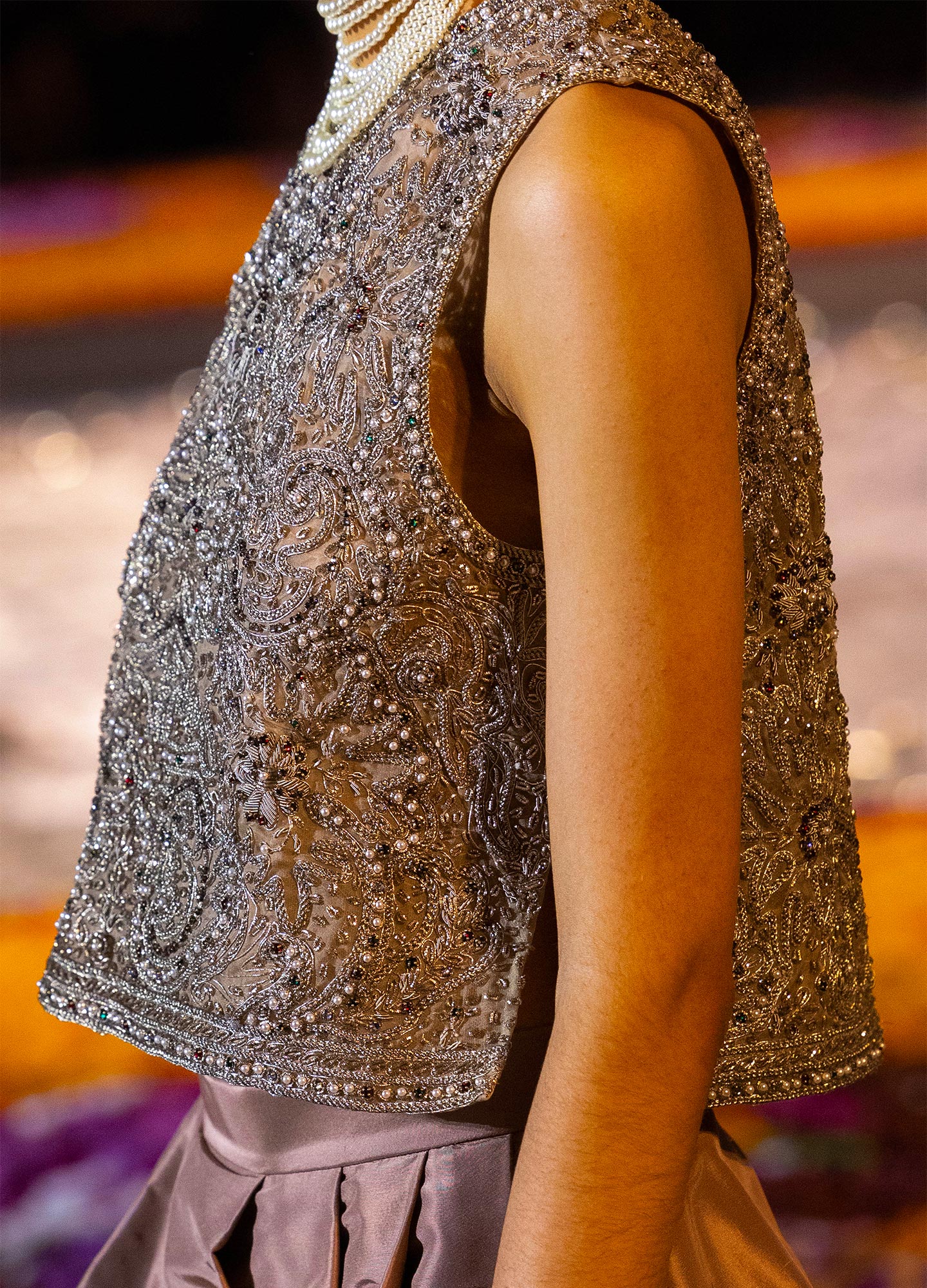
The Dior Fall 2023 show by Maria Grazia Chiuri featured embroideries by the Chanakya ateliers in Mumbai © Dior
Additionally, the Dior Fall 2023 show could also raise awareness about the importance of the luxury market in India and the potential economic benefits that could be realised by supporting this sector.
That would instigate an increased inflow of necessary foreign direct investment which could prompt policymakers to prioritise economic reforms aimed at reducing taxation along with favourable business infrastructure set-up policies, particularly for newer entrants. This could in turn lead to greater consumer spending on luxury items, which would have a positive impact on the overall economy.
India’s current HDI value is 0.633 which places the country in the medium HDI bracket, however, with luxury brands coming in and generating employment, they could push India into the high bracket segment and thus leading to a better standard of living.
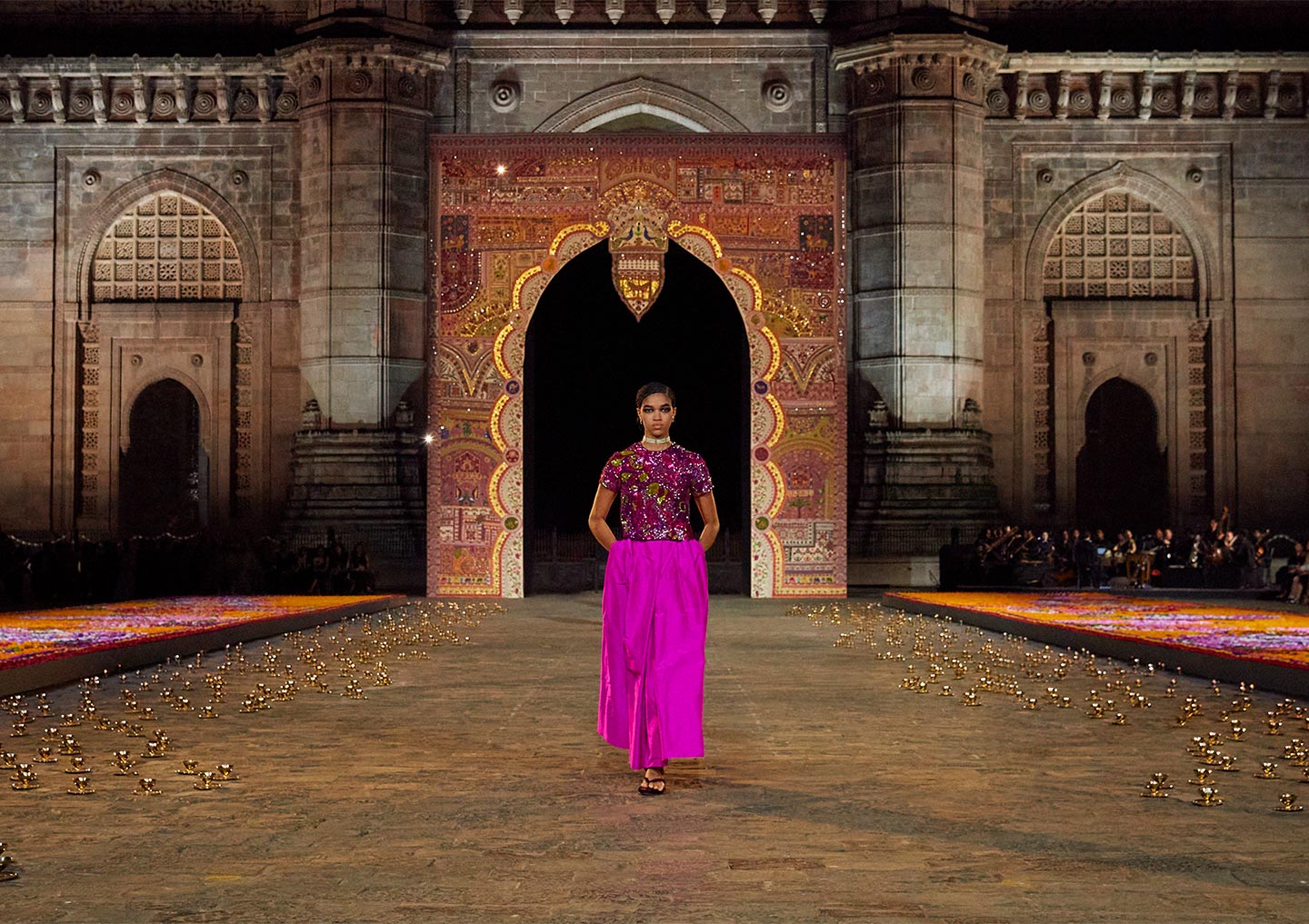
In the Chanakya ateliers in Mumbai, the aari technique was employed for the Dior Fall 2023 collection by Maria Grazia Chiuri to embroider vibrant 1960s motifs from the Dior archives © Dior
The increase in employment opportunities created by the Dior show could lead to a betterment of employee standards throughout the fashion industry in terms of wage increases, skill development, the standard of living, and better working conditions in order to maintain the luxury brand's global standards.
Sustainability is the way to go
"I always feel safer when I'm close to the land," once stated the maison's founder, Monsieur Christian Dior. Dior's "Beauty as a Legacy'' approach focuses on regenerative farming, cultural responsibility, responsible beauty, eco-design, and climate preservation while embracing more sustainable ways of functioning overall.
Dior is committed to improving its biodiversity and social implications as a member of the Union for Ethical Biotrade (UEBT). Because of the patriotism and emotions fostered in Indian people, the connection of Dior with Chankaya to promote Indian craftsmanship will provide the brand with a cutting edge in the Indian luxury market.
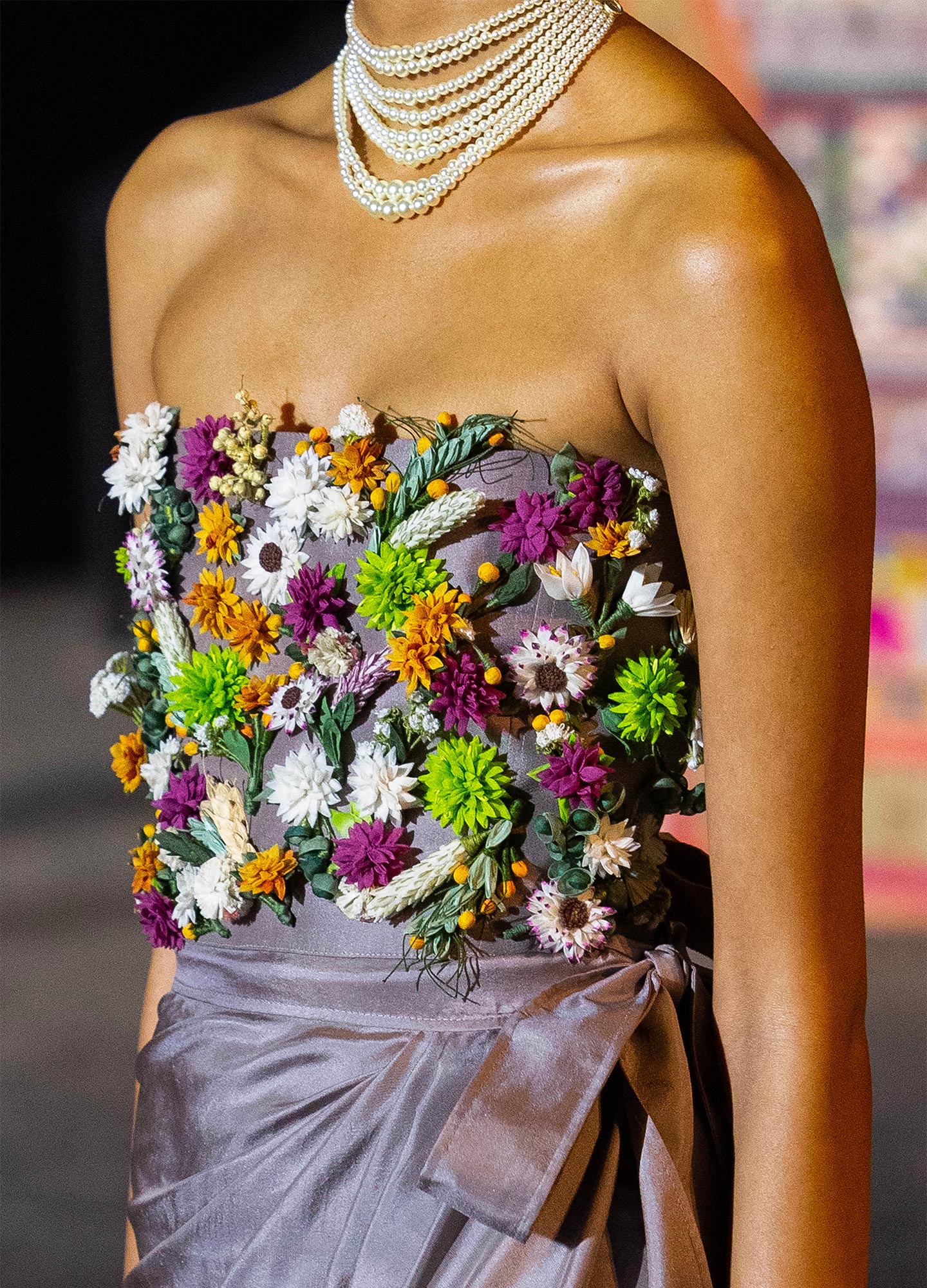
A look detail from the Dior Fall 2023 show in Mumbai © Dior
The consumers connecting themselves with the brand would attempt to make conscientious decisions, increasing the number of green consumers (who currently make up 20% of the total market) are expected to increase by 43% by 2025 in the Indian market.
Empowering women (starting from school)
The future of India's luxury landscape is dependent on the preservation of traditional crafts and the empowerment of women artisans. By supporting organisations like Chanakya School of Craft, the luxury industry can contribute to the economic empowerment of women and the preservation of traditional crafts.
This, in turn, can lead to a more sustainable and diverse luxury landscape that values the cultural heritage of India while also embracing innovation and creativity. Additionally, by integrating traditional crafts into luxury products, the industry can create unique and exclusive products that cater to the discerning tastes of global consumers.
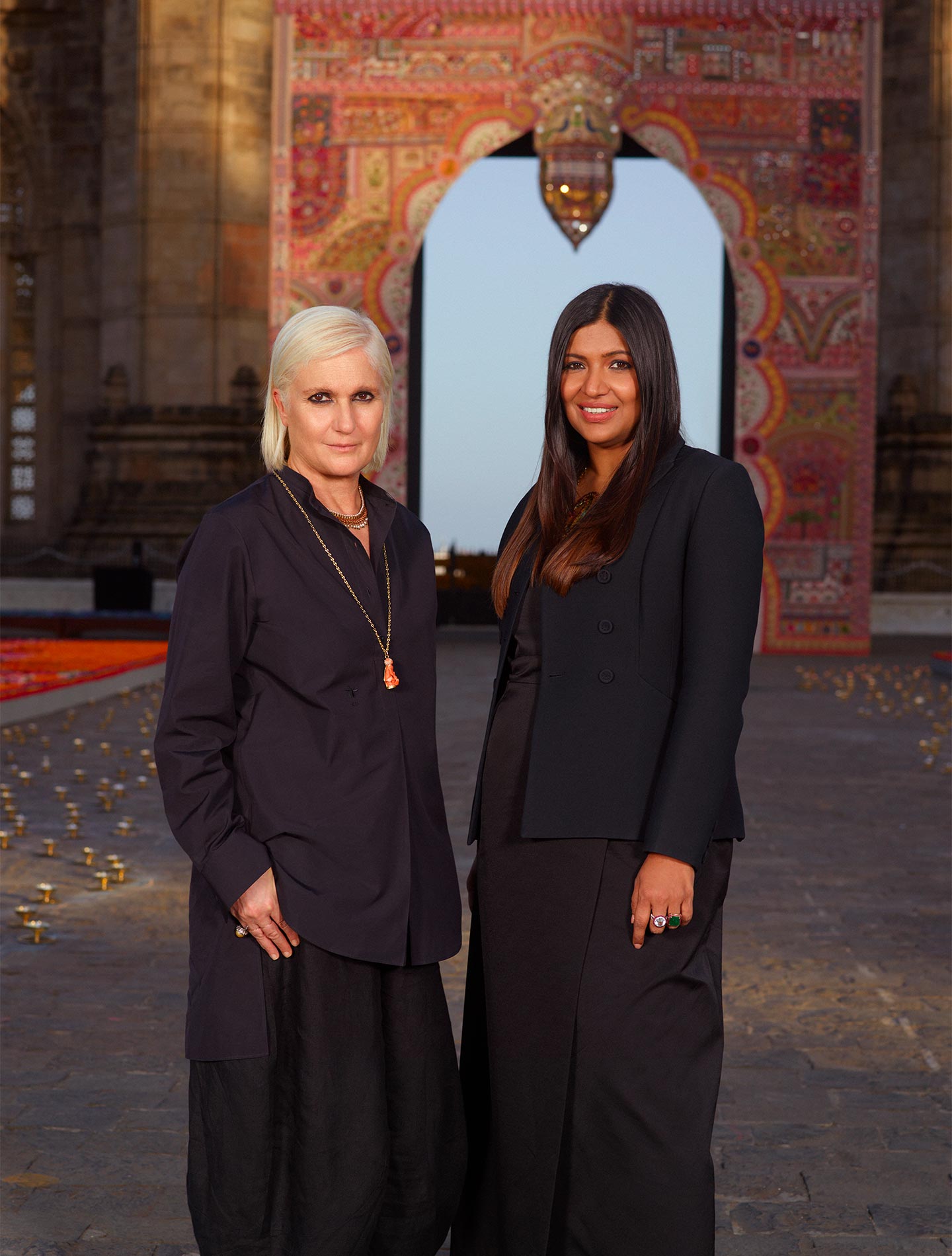
Maria Grazia Chiuri and Karishma Swali © Dior
Dior's collaboration with the Chanakya ateliers and especially with the Chanakya School of Craft is a milestone kick-off for the handicraft industry in India for other global luxury brands to look forward to. Rewriting the laws of a male-dominated industry, the Chanakya School of Craft, co-founded by Karishma Swali and Monica Shah, is the first of its kind, empowering women from underprivileged, tribal origins, and communities and assisting them in transforming their lives and communities through art.
At the Chanakya School of Craft, embroidery is the product of a shared feminist vision; a creative space for women who wish to enter the embroidery workforce.
This exemplifies how age-old craftsmanship can be creatively blended into a new luxury setting.
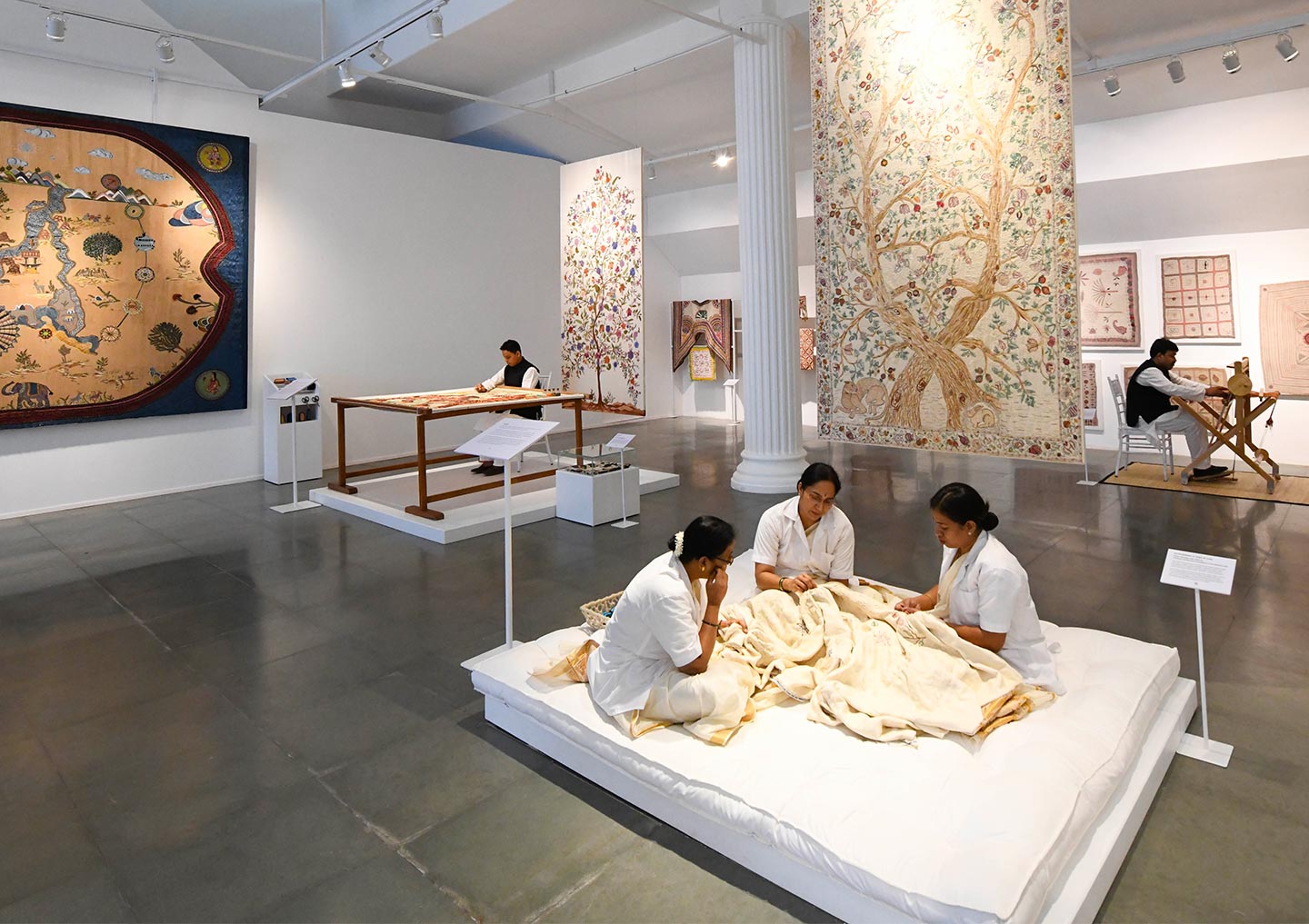
Chanakya's special presentation in honour of the Dior Fall 2023 show © Dior, photo: Sahiba Chawdhary
Through this partnership between Dior and Chanakya, women artisans are given the opportunity to showcase their work and collaborate with the LVMH-owned brand's team to create unique pieces for the maison. This collaboration not only provided these women with a platform to showcase their skills but also helped to preserve traditional crafts and techniques that are in danger of being lost.
Boosting Indian craftmanship through collaborations
A long-standing collaboration, working relationship and friendship links Maria Grazia Chiuri with India and Karishma Swali, who directs the Chanakya ateliers and the Chanakya School of Craft, in Mumbai. A brand as renowned as Dior can have a significant impact on the handicraft industry in India, as Maria Grazia Chiuri discussed with BoF's CEO. Imran Amed, during a talk with students at Istituto Marangoni Mumbai.
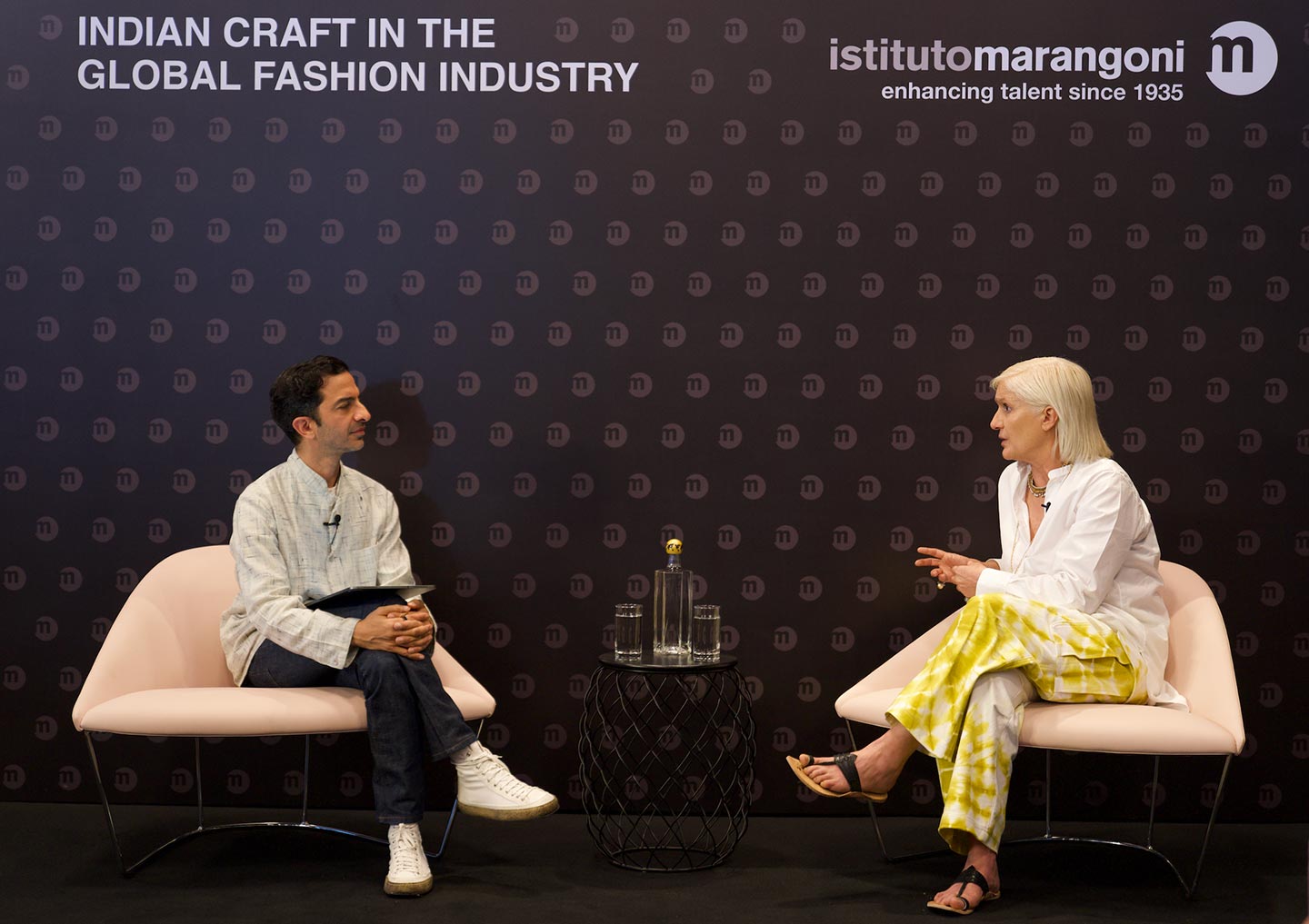
Dior's Maria Grazia Chiuri and BoF’s Imran Amed at Istituto Marangoni Mumbai
The fashion industry frequently seeks inspiration from traditional and artisanal skills, and the inclusion of Indian handicrafts in a high-profile fashion show may draw attention to the ability and creativity of Indian craftsmen and their crafts. The incorporation of Indian handicrafts in a Dior show may stimulate demand for these items both domestically and globally.
This increasing demand may create job opportunities for local craftsmen and help the expansion of India's handcrafting sector. Indians distorted from their cultural roots may seek this as a chance to associate Indian handicrafts with luxury which can help preserve traditional crafts and techniques while also introducing them to new audiences as well. Furthermore, encouraging the younger generation to look towards this with seriousness and consider it as a viable job opportunity. Carrying forward this legacy with pride.
India's embroidery business has a long history and is known for its exquisite patterns and attention to detail. For generations, embroidery has been a part of Indian culture, and it is an important component of the country's textile legacy.
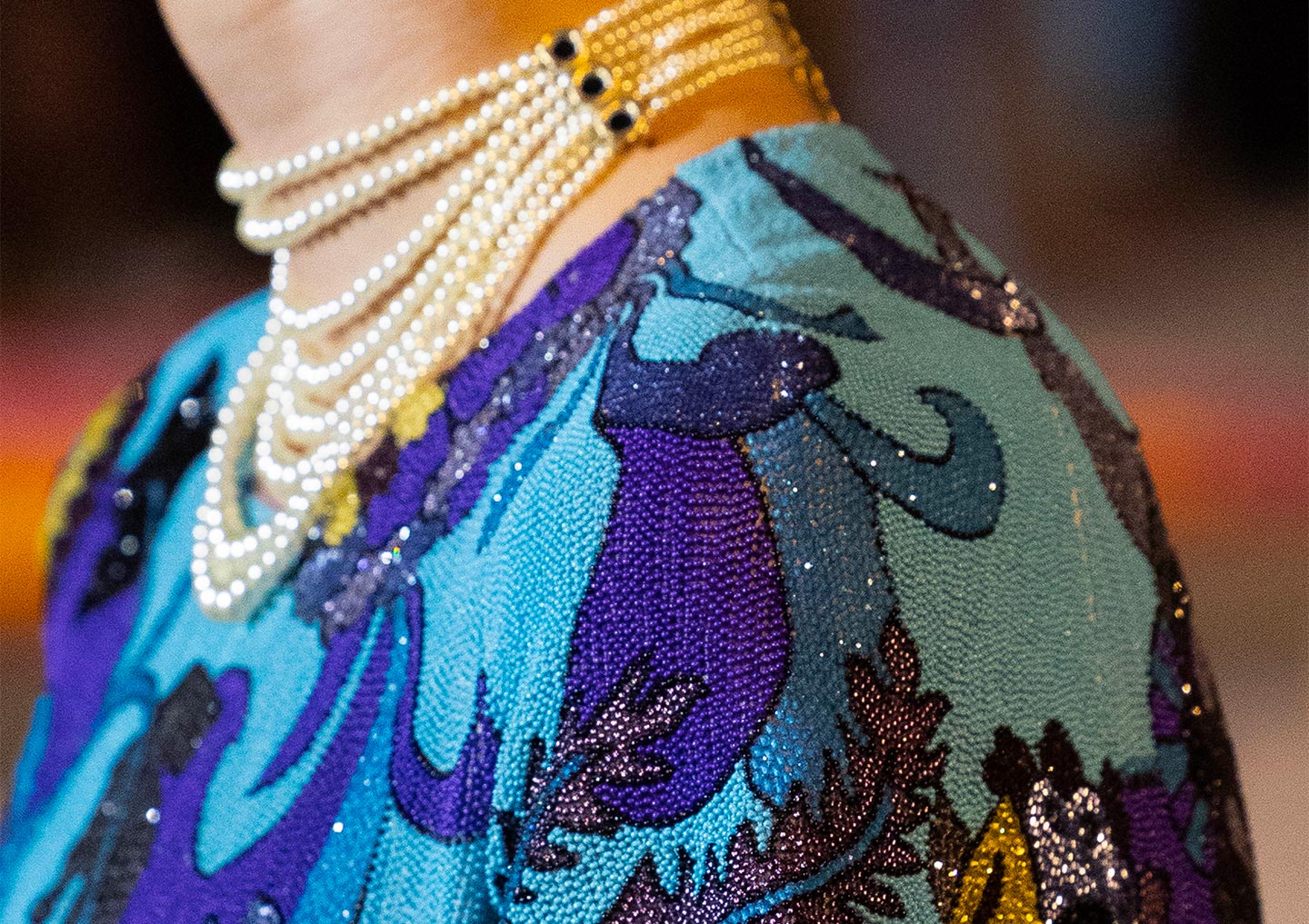
A look detail from the Dior Fall 2023 show in Mumbai © Dior
Dior's emphasis on Indian-inspired patterns and embroidery is predicted to increase demand for their distinctive items. The incorporation of Indian embroidery in the house's designs is anticipated to raise demand for trained craftsmen who specialize in the technique, thereby opening up additional job possibilities in the sector.
The increased demand for Indian embroidery could also lead to an increase in exports of embroidered textiles, which could have a positive impact on the country's economy.
Achintya Acharya, Anusha Dhiman, Alisha Khatri and Stuti Jain
Fashion Business students, 2nd year, Mumbai



